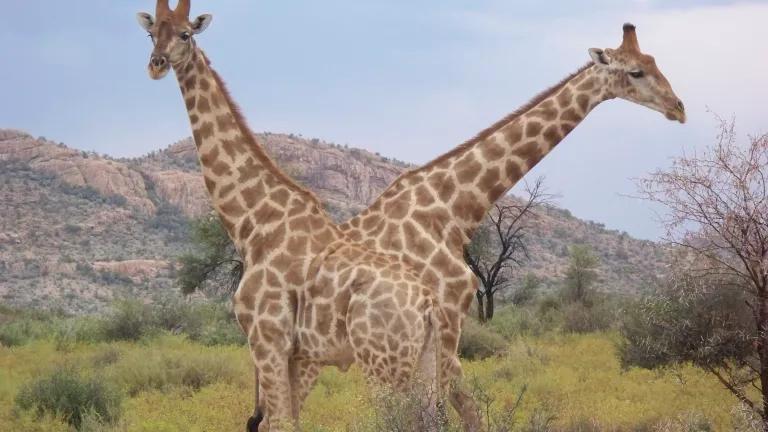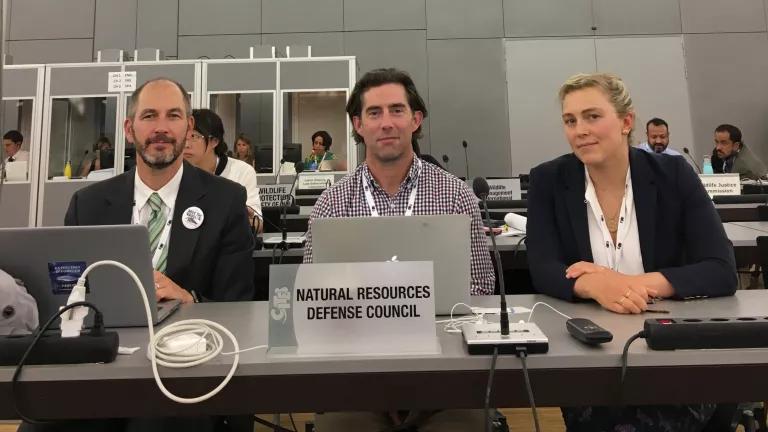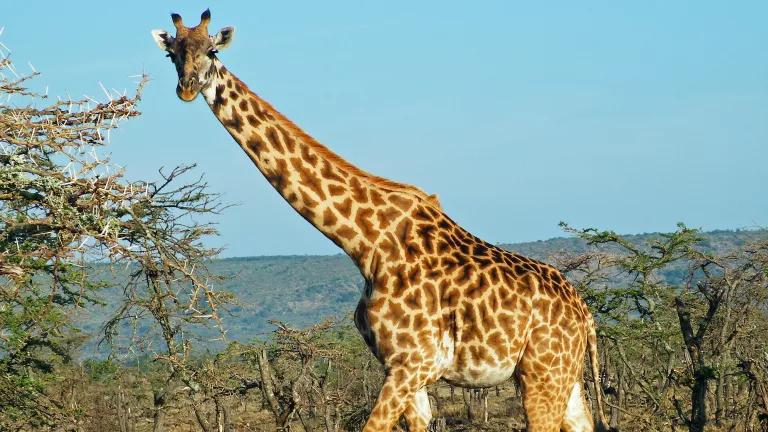Will CITES Parties Stick Necks Out for Giraffes at CoP18?
Giraffes receive little international protection even though they face many threats, including habitat loss, disease, international trade in giraffe parts, and hunting trophies.

© Kelley .
Giraffes are undergoing a “silent extinction,” declining by 40% in the past 30 years. Very few people know about this crisis as there are fewer giraffes left in the world than elephants! Making matters worse, giraffes receive little international protection even though they face many threats, including habitat loss, disease, international trade in giraffe parts, and hunting trophies.
That’s why it’s important that the Parties to the Convention on International Trade in Endangered Species (“CITES”) vote to list giraffes under Appendix II of the Convention, when they meet in Geneva, Switzerland this month. The proposal was put forward by the giraffe range states of the Central African Republic, Chad, Kenya, Mali, Niger and Senegal. While it would not prohibit international trade in giraffes and their products, it would ensure that all giraffe parts in trade were legally acquired instead of from poached giraffes. The proposal would also enable the collection of international trade data for giraffes that would justify greater protections at both CITES and other venues in the future.
While we lack international trade data for giraffes since they’re not listed under CITES, U.S. data reveals trade in giraffe parts is soaring. And, as the second largest global market for wildlife products, it’s perhaps no surprise that the U.S. plays a role in giraffes’ decline. An analysis of U.S. trade data shows that between 2006 and 2015, 39,516 giraffes and their parts were imported to the U.S., which is the equivalent of a bare minimum of 3,751 giraffes (see page 27). The most commonly imported items were bone carvings, bones, trophies, skin pieces, bone pieces, skins, and jewelry—mainly coming from South Africa, Zimbabwe, Tanzania, and Namibia. Other giraffe specimens in trade include shoes, hair, small leather products, feet, large leather products, and horn carvings.
So this proposal should be tremendously popular, right? Unfortunately, it isn’t. While 32 African nations and leading giraffe scientists support the proposal, other key players have not yet expressed support. The European Union says they’ll support, but we have serious doubts, even though its countries provide a significant market for giraffe parts. The U.S. has not yet indicated how they will vote on the proposal, and some of the top importers of giraffe parts, including South Africa and Namibia, will oppose. Why the reluctance? Trophy hunting. Giraffes are very popular with trophy hunters, especially in the U.S. and EU. The United States alone imported 3,744 giraffe trophies between 2006-2015 (see page 28-29).
The bottom line is that we’re in crisis when it comes to our earth’s biodiversity. The United Nations’ IPBES Report, released earlier this year, warned that up to one million species face extinction due to human activities, including wildlife trade. CITES must rise to the occasion and protect species at a rate that ensures their survival. Other international conventions must also step up and countries must enact domestic species protections like we’re currently advocating for in the United States. But CITES is a big piece of the puzzle, and its 183 Parties need to step up to the plate for a host of species—including giraffes.




